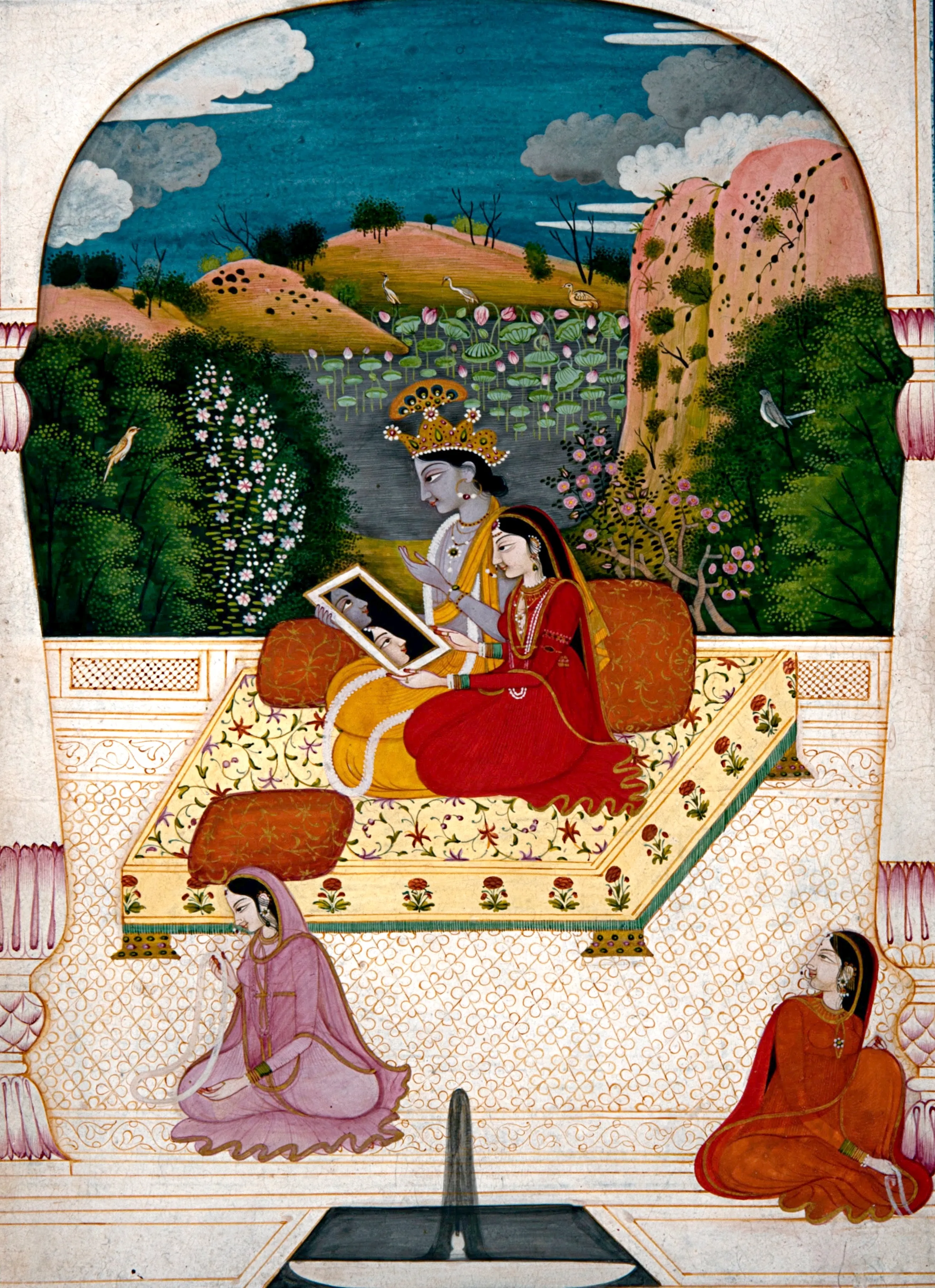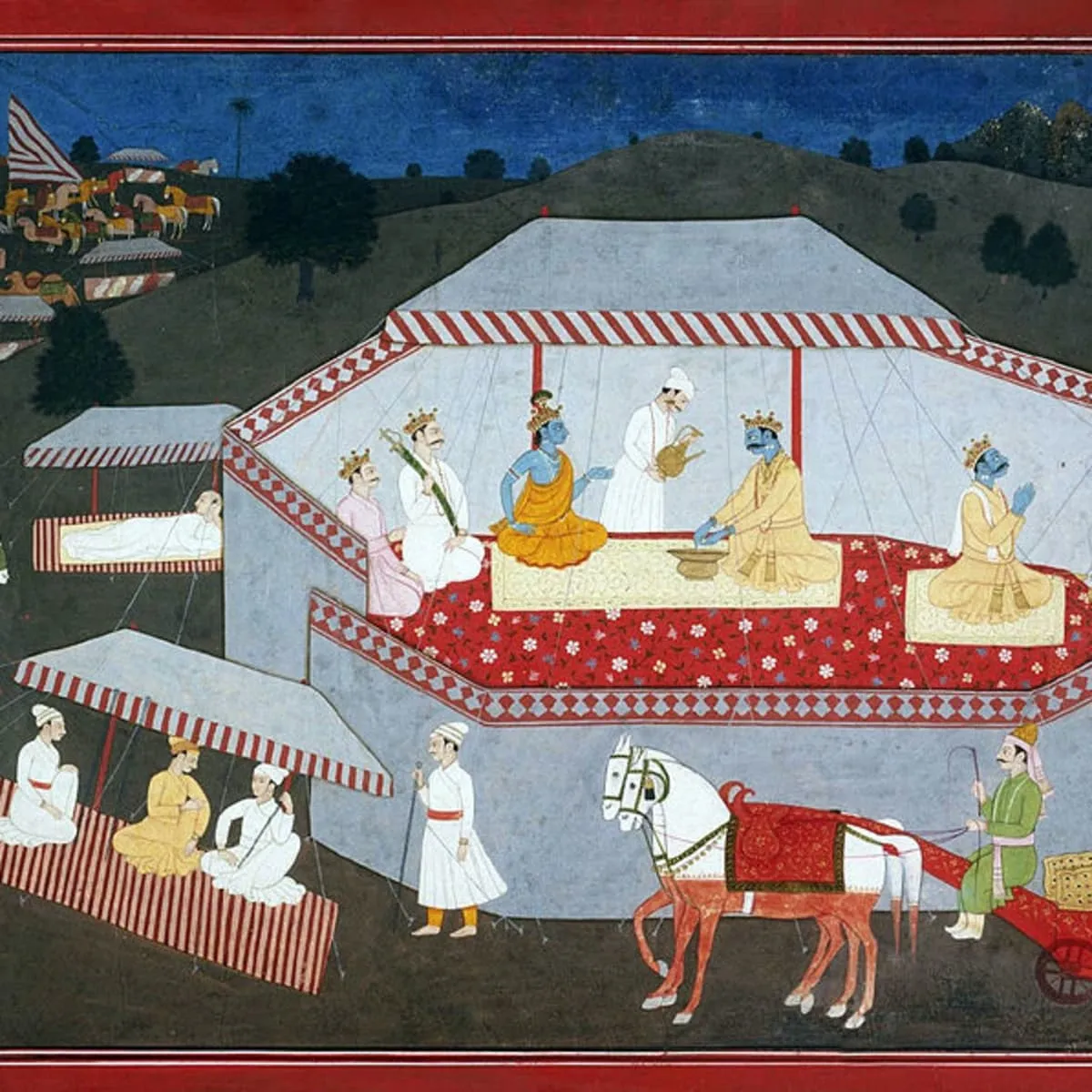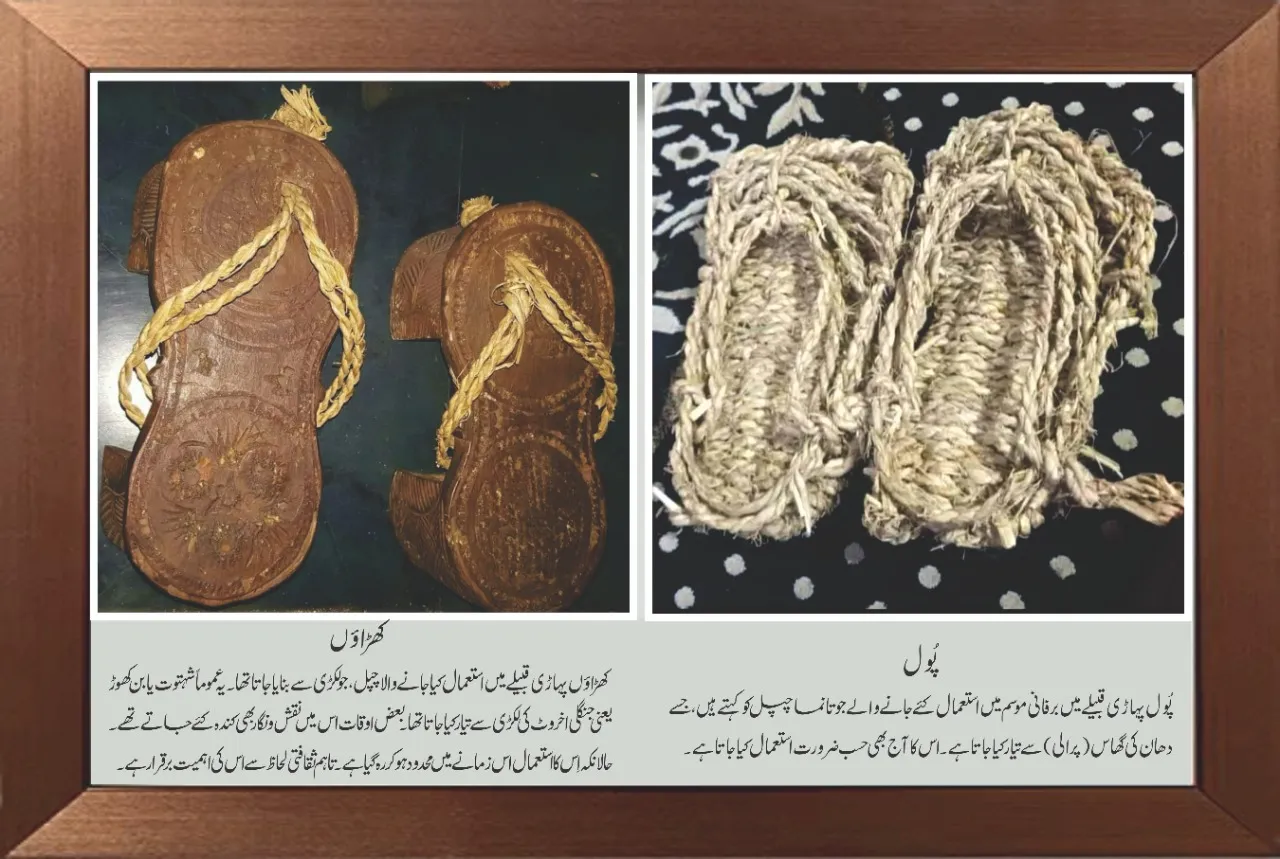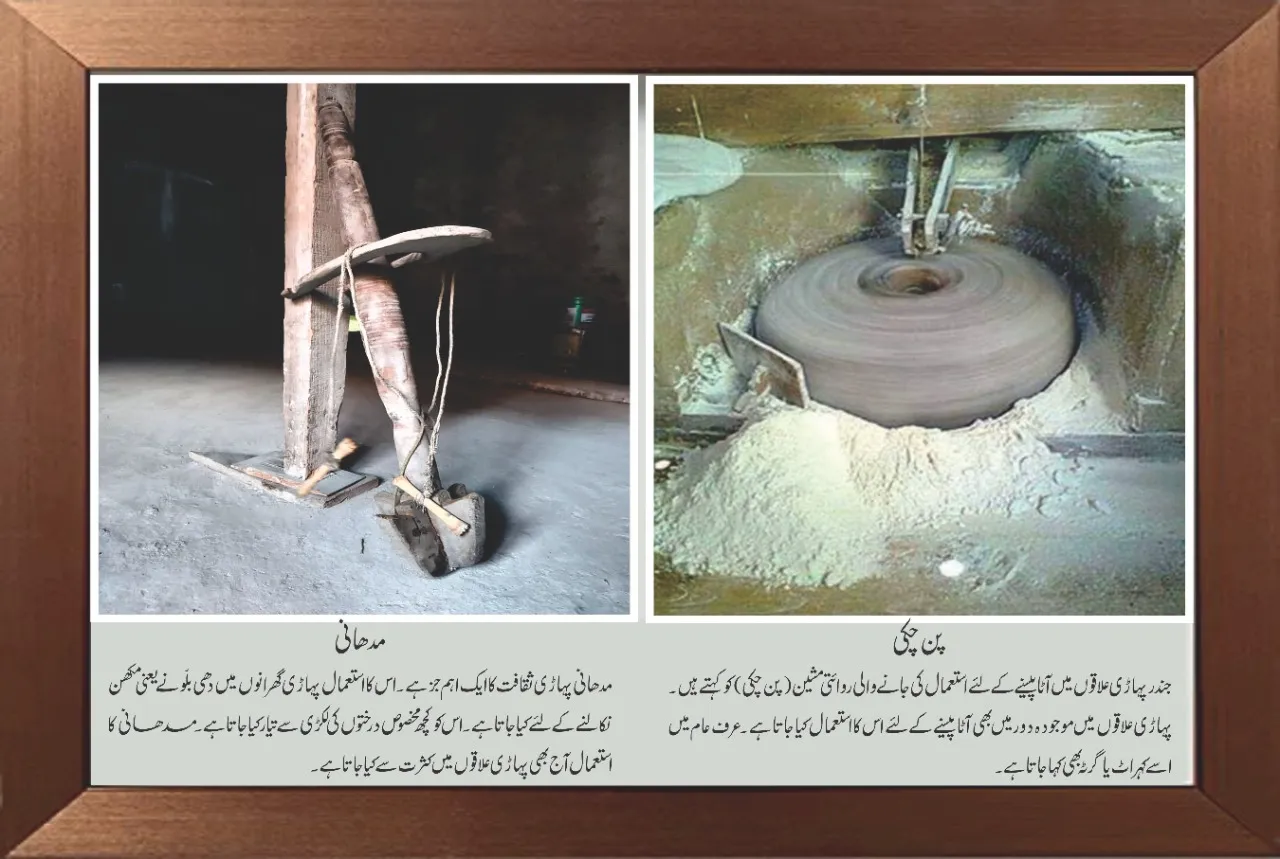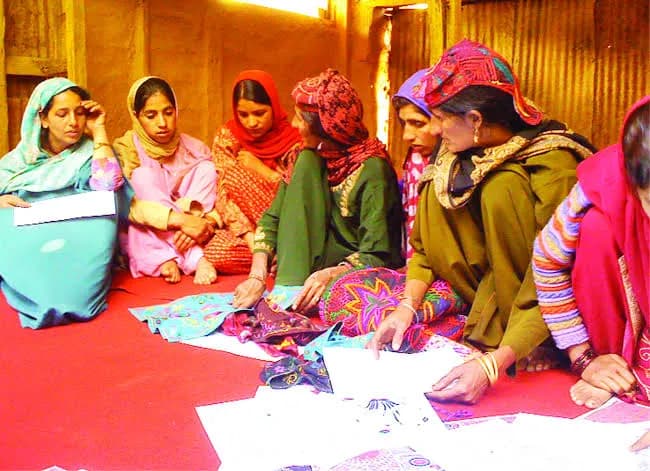Artistic Legacy's
Pahari Painting
Pahari painting flourished between the 17th and 19th centuries in the hill kingdoms of Jammu, Himachal Pradesh and Garhwal. It began in Basohli under Raja Kripal Pal around 1675, known for its bold lines, vibrant colours and expressive faces. As the Mughal Empire declined in the early 18th century, artists from the Mughal court moved to hill states like Guler and Kangra, bringing refined aesthetics, Persian motifs and realism to Pahari art.
Pahari Art and Their Crafts
The traditional crafts of the Pahari communities are not just skills they are soulful expressions of a life lived in harmony with nature and community. Pahari embroidery is one such art, entirely handmade with chain, satin and mirror stitches. Passed from mothers to daughters, these vibrant threads narrate stories of seasons, festivals and shared memories, woven during winter gatherings.
Woodwork and basketry form another artistic pillar. Hand-carved wooden spoons and tools, alongside willow twig baskets made by women, show the blend of function and beauty in daily life.
Completing this tapestry is leathercraft, where goat and sheep hides are transformed using natural tanning methods into footwear, harnesses and containers each piece built to endure Himalayan life.
Kangra Paintings : Himachal
Kangra painting is a miniature painting style that originated in the Kangra region of Himachal Pradesh, India, known for its delicate lines, naturalistic colors and lyrical depiction of themes like love and nature. It emerged as a prominent form of Pahari painting, succeeding the Basohli style in the mid-18th century. Kangra paintings are renowned for their portrayal of human emotions, spiritual stories and the beauty of the natural world.
The style is characterized by its use of soft, flowing lines and a pastel color palette, often depicting scenes from Hindu mythology, particularly the love stories of Radha and Krishna. The artists paid meticulous attention to detail, capturing the nuances of facial expressions and the intricate patterns of clothing and jewelry. Nature is a recurring theme, with lush landscapes, flora and fauna intricately woven into the compositions.
Kangra painting reached its zenith under the patronage of Maharaja Sansar Chand (r. 1775-1823), who supported artists and encouraged the development of this art form. The paintings were typically created on paper or cloth using natural pigments derived from minerals, plants and other organic sources.
Today, Kangra paintings are celebrated for their artistic excellence and cultural significance, representing a rich heritage of Indian art that continues to inspire contemporary artists and art enthusiasts worldwide.

Raga Vasanta - Kangra Painting
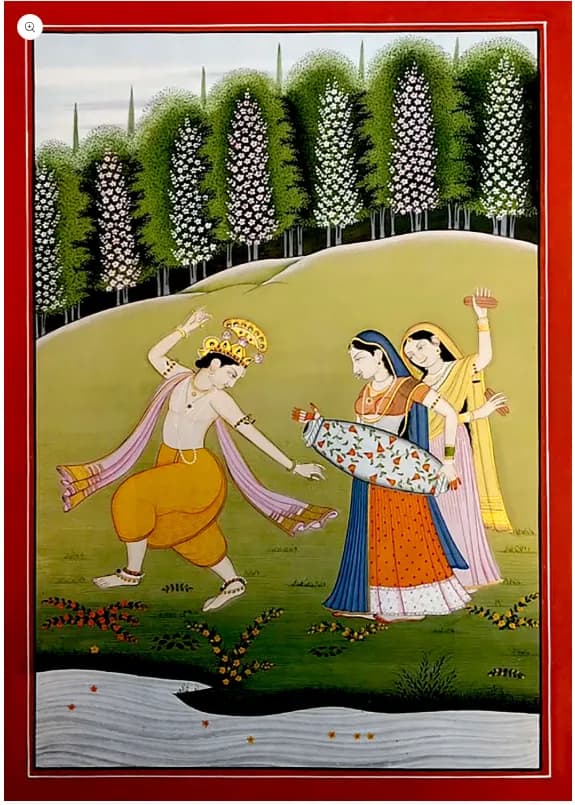
The Gods sing and dance for Shiva and Parvati - Kangra Painting
Thangka Paintings : Himachal
A thangka could depict a deity, a mandala (geometric figure with symbolic meaning that is also used as an aid in meditation), or a spiritually significant event from the life of a Buddhist master. While thangkas are now also painted for sale, they are integral to practiced Buddhism.
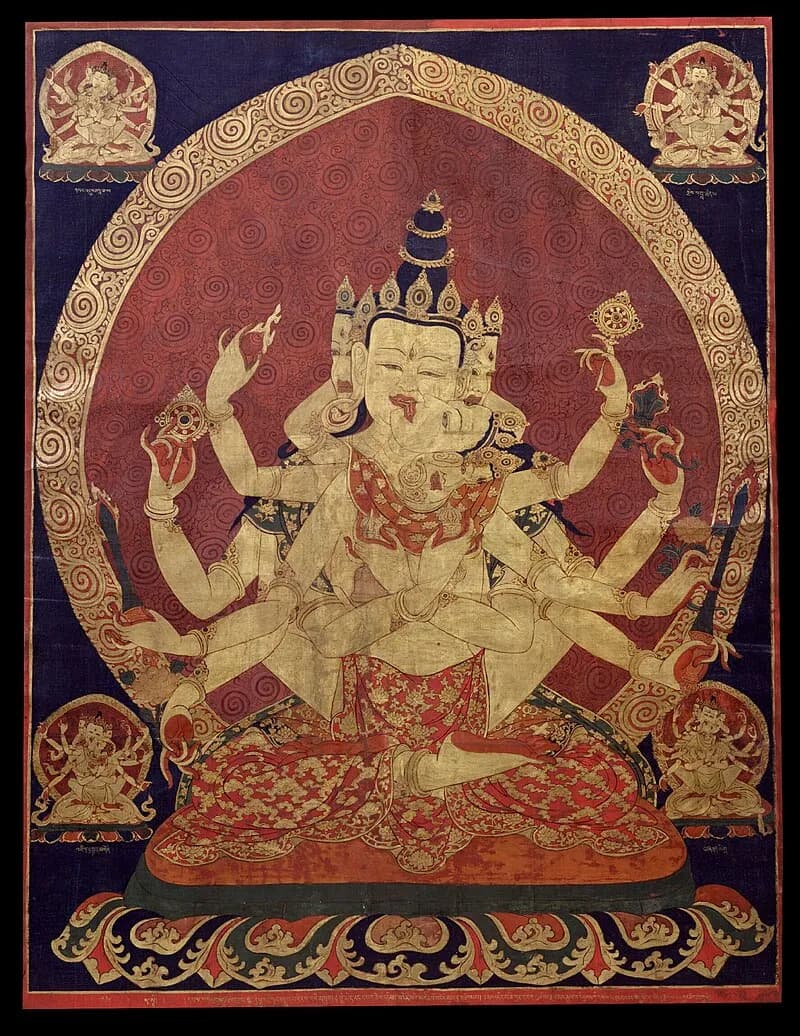
17th century Central Tibetan thangka of Guhyasamaja Akshobhyavajra, Rubin Museum of Art
Aipan Art : Uttarakhand
Traditional paintings of Uttarakhand include Pahari paintings, Chitai paintings and Aipan art. Pahari paintings, originating in the hills, are known for intricate detailing and vibrant colors, often depicting Hindu deities and mythological scenes. Chitai paintings are a folk art form, primarily found in the Kumaon region, featuring local deities, village life and landscapes on wooden boards. Aipan art, also from Kumaon, is a ritualistic folk art using geometric and symbolic patterns on walls and floors during ceremonies.
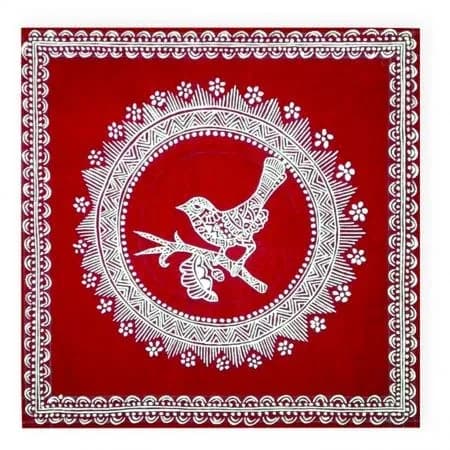
Aipan Art of Uttarakhand
